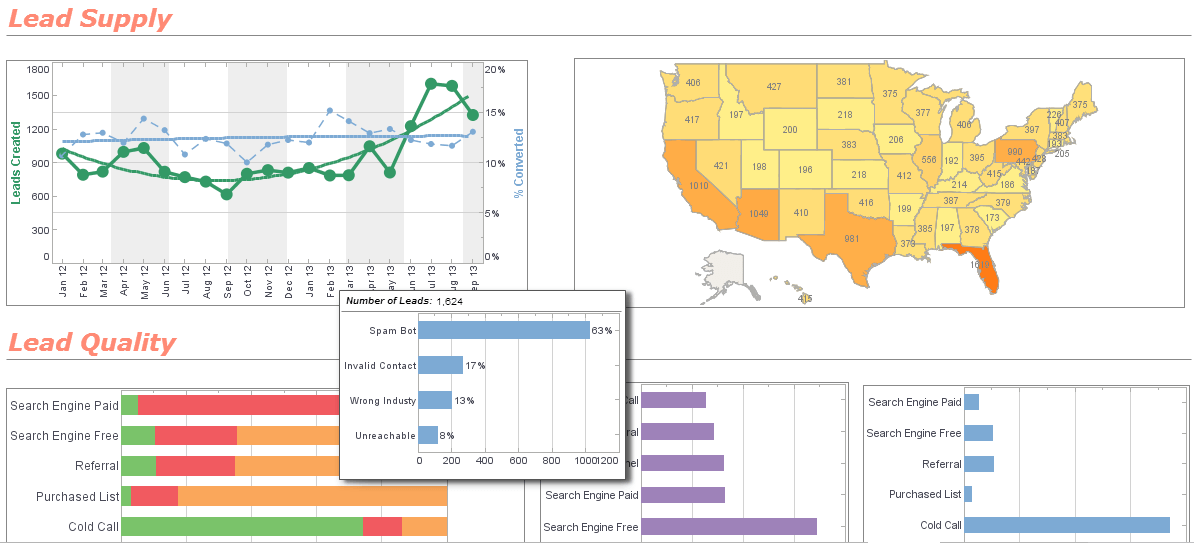InetSoft Product Information: Designing a Dashboard
To set the properties of a Viewsheet component, right-click the component in the Viewsheet grid, and select ‘Properties’ from the context menu. This opens the ‘Properties’ dialog box for the component.
To set the properties of a Container component, right-click in an empty region between the components in the group, and select ‘Properties’ from the context menu. This opens the ‘Properties’ dialog box for the Container component.
Many of the properties in the ‘Properties’ dialog box are common across components. The following sections discuss these common properties. Properties that are unique to a particular element are discussed in the section for that element.
- The General tab of the ‘Properties’ dialog box is common to many components. It has five standard properties: Name Primary Assembly, Visible, Enabled, and Title.
- The Data tab in the ‘Properties’ dialog box is common to many components. This tab allows you bind the component to the data source that supplies the data displayed by the component. It has five standard properties: Table, Column, Aggregate, Width, and Value.
- The Advanced tab of the ‘Properties’ dialog box is common to many components, but options presented vary for different components.
- The Pre-Aggregate tab is common to all Output and Data View components (excluding Table and Embedded Table). This tab allows you to specify which aggregates are pre-computed to improve Viewsheet performance.
- Right-click the Viewsheet element that requires the aggregation (e.g., crosstab table, text, etc.), and select ‘Properties’from the context menu.
- In the ‘Properties’ dialog box, select the Pre-Aggregate tab.
- Select the columns to be pre-aggregated, along with the corresponding aggregation methods.
- Click ‘OK’ to close the dialog box.
 |
Read how InetSoft saves money and resources with deployment flexibility. |
InetSoft Viewpoint
"The open standards aspect is very important to us since it allows our customers to integrate our technology more easily and leverage assets they already have, in terms of hardware and software and IT skills. So based on this BI platform, our software delivers a host of front-end BI tools including visualization tools, enterprise reporting, monitoring dashboards, and analysis. Those functions were based on a very powerful patent-pending technology we call Data Block.
This Data Block technology is really made up of a back-end data mashup engine and a caching middle layer. There is a front-end we call the worksheet, which is a Web-based, spreadsheet-like user interface that a power user can easily use to combine and transform data blocks. The data blocks are typically started at the atomic data block level. That is typically created by an IT or a BI specialist. They choose these data blocks and performance tune those data blocks.
Then the power users can use those building blocks to build more complex, but more useful structures for answering the questions they have on hand. And all the data blocks you build, in turn become building blocks themselves. You can build on this architecture, building very sophisticated structures which you can use to answer a wide range of unanticipatible questions. " - Luke Liang, CEO, InetSoft
 |
Read why choosing InetSoft's cloud-flexible BI provides advantages over other BI options. |
| Previous: Dashboard Design |
Next: Formatting Dashboards
|
